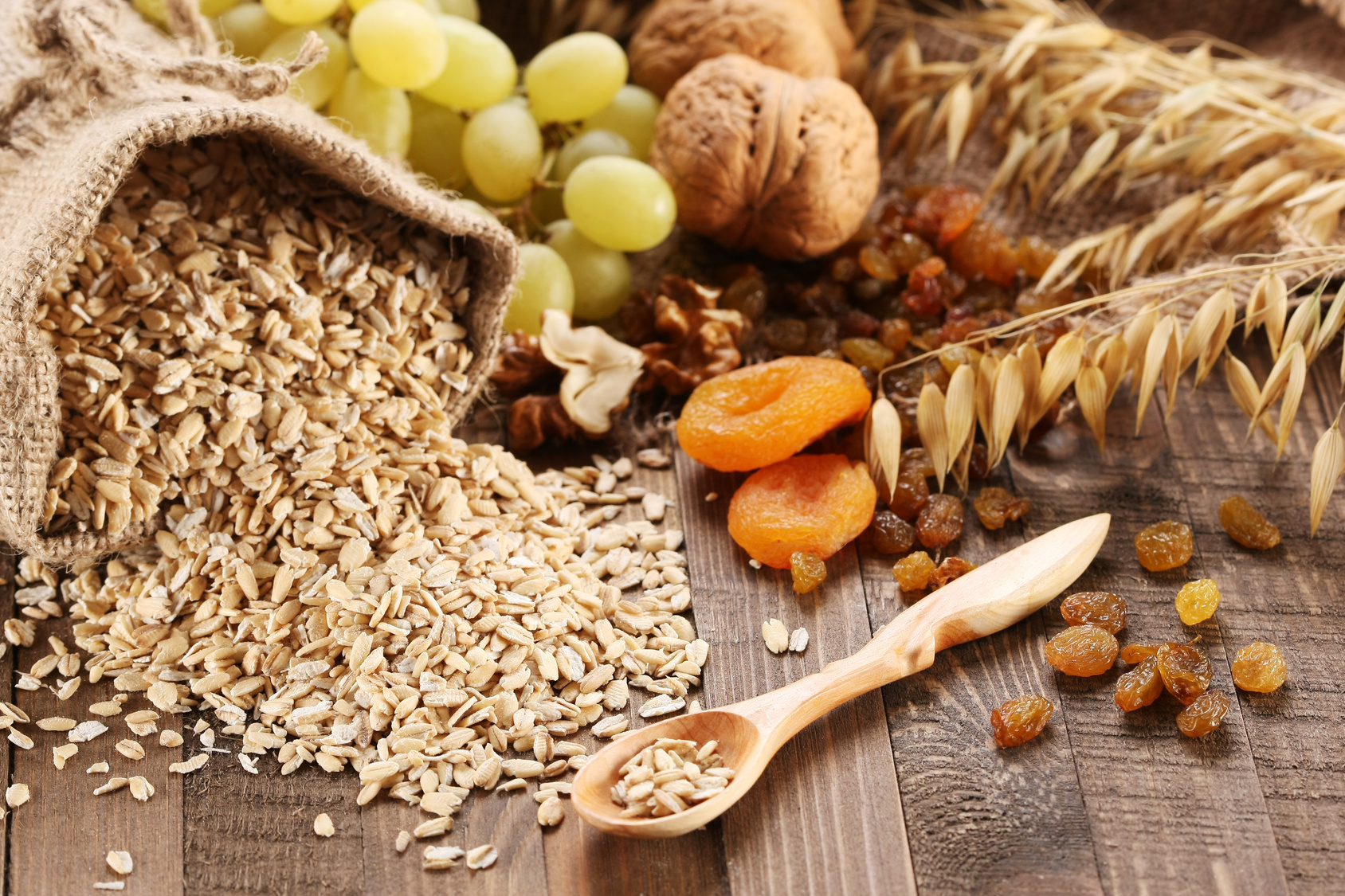Share This
People who eat the most whole grains are less likely to be overweight and obese, and have a lower risk of many chronic diseases. And yet the biggest sources of whole grains for kids and adults alike are commercial yeast breads and ready to eat breakfast cereals – which tend to fall on the more processed side of the spectrum. Clearly, these foods are offering at least some degree of health benefits. But how exactly is the nutrition of grains preserved, on their journey from farm to factory?
Research shows that antioxidant levels remain intact in bread after baking, but there are a number of other ways that whole grains get processed before they make it into your pantry. Today let’s look at how two common industrial processing methods (extrusion and popping) can affect the nutrition of whole grains.
Extrusion
Extrusion is a process used to make pasta, cereal, croutons, and other grain products, by sending a flour and water mixture through a die to get uniform shapes. While this sounds pretty high-tech, the extrusion press for pasta-making actually took hold in Italy in the sixteenth century. Extruding pasta dough through dies compacts its starch structure, so that the pasta digests more slowly. For this reason, multiple studies have documented that pasta has a lower Glycemic Index (a measure of how much a food raises your blood sugar) than many other grain foods made from similar ingredients.
When extrusion is used outside of this traditional context (as for snack foods), the results may not be so cut and dried. In an animal study, researchers fed pigs whole grain barley and oats, and extruded barley and oats, to see if there were any nutrition or health differences. The researchers found that the phenolic acids (healthy phytochemicals found in plant foods) were 29% and 14% more bioaccessible in extruded barley and extruded oats, respectively, compared to their non-extruded counterparts, meaning that they were easier for the body to absorb. However, the gut microbiota of pigs eating the extruded grains showed less diversity and less presence of beneficial microbes. This indicates that extruded grains may be associated with poor gut health, at least in animal studies.
While pasta’s documented difference on blood sugar is certainly a plus, it’s unclear if other extruded grain products are healthier, especially since, aside from pasta, many extruded products today have added sugar, salt, and fats.
Popping
Popcorn is the most well-known popped grain, but other whole grains, such as sorghum and amaranth, can also pop when heated, creating a crunchy, nutritious snack. Dr. Joe Vinson, of the University of Scranton, found that because popcorn is only about 4 percent water, the polyphenols are more concentrated than in unpopped corn. In fact, his research demonstrates that popcorn has even higher antioxidant levels than fruits and vegetables. Similarly, researchers in central America found that popped amaranth had better protein quality than amaranth flakes, roasted amaranth, or raw amaranth, indicating that popping can be a useful way to preserve nutrients when cooking.
That said, the method of popping can affect the nutrient content, and traditional, skillet popped grains may not be the best route. Instead, researchers in Mexico found that a special “fluid bed system” of popping preserves more of the amino acids in popped amaranth, and may be a more promising method to pop grains at an industrial level.
The Big Picture
Although intact whole grains, with little or no processing, may be the healthiest choice – and one we encourage you to enjoy – processed food isn’t going away. We’ll keep our ears open and continue to share with you, from time to time, research that sheds light on the best processing methods for retaining nutrients and taste. Regardless of what side of the processing spectrum you find your foods on, research studies repeatedly demonstrate that eating more whole grain foods is better for health. (Kelly)
This is the third post in our series on whole grains and processing. Click below to read the related posts in this series:


Comments
Add a Comment